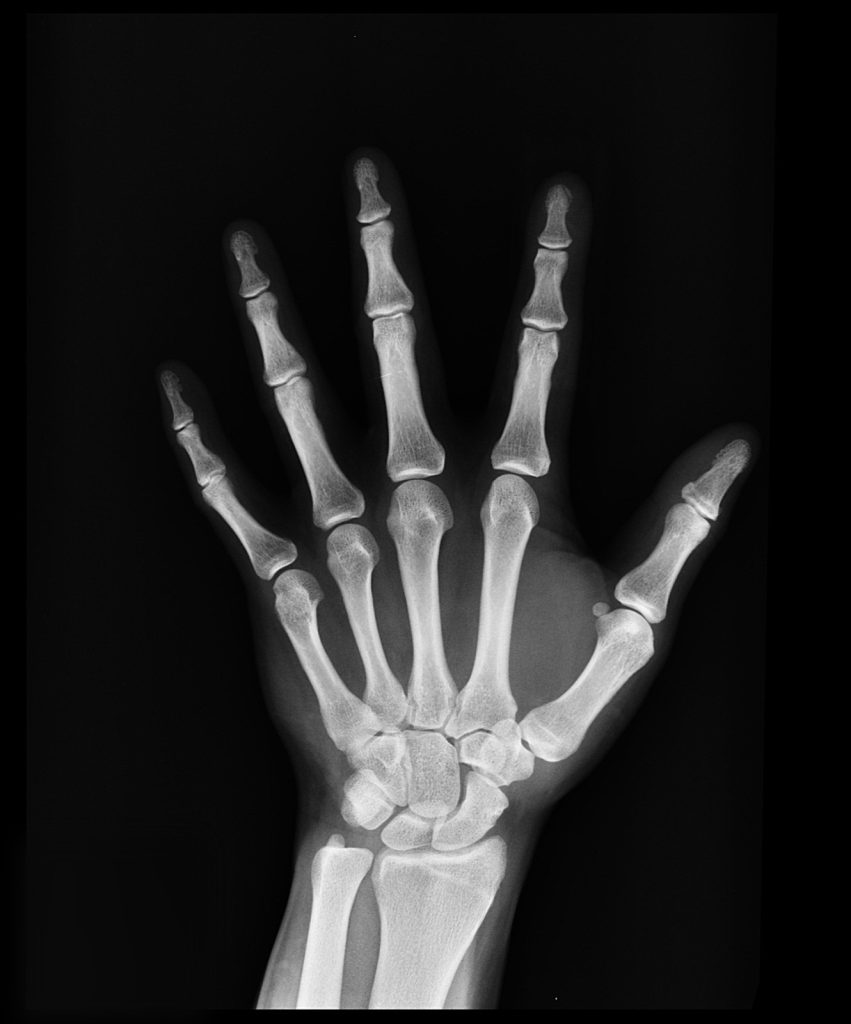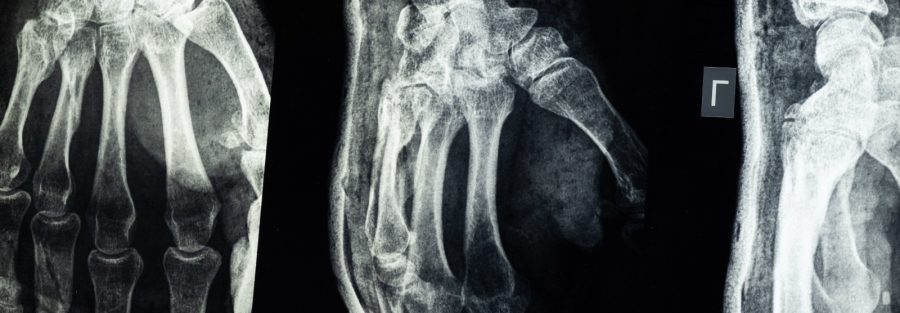Light is a form of electromagnetic radiation. At some wavelengths it appears as visible light, at others it takes the form of radiation we cannot see, such as ultraviolet, infrared, and x-rays.
X-rays have very short wavelengths that, unlike visible light, are able to pass right through most tissues in the human body. Since bones contain calcium, a denser material than most other tissues, they are able to stop some of the x-rays and can thus form a shadow. If you place your hand in front of a flashlight, it will cast a shadow on the wall behind it.

In a similar manner, x-rays directed at the body produce shadows on the opposite side that can be registered on film or on a digital sensor, so that bones are clearly visible while soft tissues, such as muscles are shadowy. As a result, the two-dimensional images formed by the x-rays are quite useful in revealing structures within the body, and can easily display fractures, dislocations and more in bones.


